Pedagogical Possibilities with Technology
Learning: A Process of Making Music Creating opportunities for students to express, experiment, collaborate, and reflect
Facilitating musical thinking and creative expression through the use of Musicking Cards

Pedagogical Possibilities with Technology
Blending musical learning with technology opens new ways of teaching and learning
04
Inquiry-Based Learning: A Process of Making Music
Creating opportunities for students to express, experiment, collaborate, and reflect
Cards to Cue, Trigger, and Question
Facilitating musical thinking and creative expression through the use of Musicking Cards
18
Musical Conversation
A STAR Champion shares her teacher-leadership journey
23
STAR Highlights
An overview of STAR PD programmes from July to November 2019 13
29
STAR–POST
EDITORIAL TEAM
Josephine Chan
Senior Academy Officer (Music)
Wong Yong Ping Tommy Academy Officer (Music)
Adeline Tan
Senior Academy Officer (Music)
DESIGN Garçon Design
Editorial
Welcome to 2020! As we begin a new decade, we bring you an issue of STAR-Post packed with insights and possibilities for the use of new technologies, approaches, and resources, to engage our students in deeper music understanding and selfdirected learning.
Of New Technologies, Approaches, and Resources...
With the wide array of apps and technological tools available for music teaching, one might feel daunted by technological complexities and overwhelmed by the rush to keep up with the latest in such products. In this issue, we address the issue of technology by directing our focus on its usefulness and suitability for the music classroom and how it can be used to deepen students’ musical understanding.
We will explore how Inquiry-Based Learning (IBL) can be a dynamic tool to encourage students to
embark on a continuous process of discovery that would eventually empower them to apply such musical processes instinctively and independently. We will also take a peek at how musicking cards are used creatively in a primary school context to engage students in music-making, and how they can be a reflective and evaluative tool for composition.
As we consider new technologies, approaches, and resources, we keep in mind our role to make music more accessible to all, and to give emphasis in nurturing the musical identities and the development of 21st Century competencies in our students.
In this new school year, let us continue to learn, explore, and experiment in ways that inspire our students to have a lifelong engagement with music.
James Lee Deputy Director, Music Singapore Teachers’ Academy for
the aRts
Pedagogical Possibilities with Technology
Blending musical learning with technology opens new ways of teaching and learning, and provides opportunities for students to create, reflect on, respond to, analyse, listen to, and communicate with music.
In the digital world we live in, technology is prevalent, and it has impacted the way we live and experience learning. Hence, there is greater attention to how music teachers can leverage the affordances of technology to facilitate music learning in the classrooms, especially in the areas of creating, performing, and responding to music. The intersections between music, technology, and education can be a powerful catalyst for musicmaking and learning.
Mobile devices (tablets and phones) today offer numerous functionalities which can be used for teaching and learning in the music classroom. They can serve as digital audio workstations, connect to online portals, and provide access to various learning resources. Teachers can take advantage of streaming platforms, such as Spotify and YouTube, to gain access to millions of tracks in multiple styles and genres. There is a plethora of music-related apps available in the app stores for music educators to explore.

Participants recording multiple layers of sounds at the ICT Milestone Workshop
Many teachers have explored and introduced the use of apps, such as GarageBand, Virtual Guitar, and Real Drum, in place of acoustic instruments, as a form of substitution for music-making. The direct replacement is but one of the many ways where technology has enhanced teaching and learning approaches in music.
There are many other applications of technology that encourage self-evaluation and self-directed learning. For example, there are apps that provide the option of recording multiple layers of sounds, which could be isolated for students to proof-listen their work. The isolation function could also be used as a teaching tool to highlight the different roles that each instrument plays, in relation to balance, texture, register, and tone colours. As technology enables
immediate feedback, teachers could harness this tool to help students discern the suitability of their musical decisions and continue to work on their project independently.
Teachers have also harnessed the internet, social media, and the Student Learning Space (SLS) to allow students to continue their collaborative music-making beyond the confines of the classroom and in the comforts of their homes. These examples go beyond substitution and offer creative musical possibilities that would not have been feasible without such technology.
Making Music Accessible and Relevant
Technology has also opened opportunities to give greater access to students with diverse musical interests and needs which aid the growth of student identities. The availability of apps and web tools has facilitated music creative work and encouraged music sharing. Thus, students are no longer passive consumers of music and now have opportunities to be music creators. For example, students can easily record sounds that intrigue them, manipulate and juxtapose these sounds in endless

Students at Ahmad Ibrahim Secondary School learn how to create and perform their own loop-based composition
combinations to create new sounds, thus expanding the sound palettes available to them, beyond the stock sounds found in the software. The evolution of technology has created new ways of making music, giving rise to new genres and musical structures such as loop-based music.
One genre that employs loops is EDM (Electronic Dance Music), which many students enjoy listening to. By connecting to the students’ sound world, music learning is made relevant and interesting for the students at Ahmad Ibrahim Secondary School, who have had their hand at recording their own sound samples and creating their own loops.
Their music teacher, Lee Jia Ling, shared how the students engaged in live improvisation, triggering the keys on the Launchpad of the MIDI controllers, similar to how DJs create music. She believes that the use of technology to create music is an in-road to making music accessible, regardless of her students’ interests and experiences.
Teachers can explore creating an environment that harnesses various technological tools to make music accessible and relevant to students, enabling them to express themselves and grow their identity through music-making.
The technological tools that she chose to use are utilised by many leading DJs in the world. She wanted to provide her students with an authentic learning experience, so that they would see the relevance to real-life application and, thus, be more motivated to work on their compositions. Even though she had to spend time teaching the students how to handle the technical equipment, she did not compromise their musical learning and ensured that her students developed an
understanding of musical concepts such as mood, texture, and timbre, in their live improvisations.
Technology offers great potential for students to develop musical understandings, regardless of their musical experiences. Thus,
Inseparable: Musical Learning and Technical Understandings

Jia Ling giving feedback to students working on their Film music composition
Musical understandings and technical understandings can be built simultaneously to provide a
teachers can explore creating an environment that harnesses various technological tools to make music accessible and relevant to students, enabling them to express themselves and grow their identity through music-making.
fuller learning experience, just as how technical and musical skills are applied concurrently in real-life contexts. Similarly, in the music classroom, teachers could scaffold and forefront musical Learning Outcomes (LOs) as students engage in their creative tasks (such as in performance, composition, arrangement, and improvisation) through technology.
As part of their Film Music composition module at Ahmad Ibrahim Secondary School, Jia Ling embeds the LOs and scaffolds the process of
The use of technology in education has often been focused on the technology itself – its features and operation. However, one would need to give the same degree of consideration to decide the purposes and approaches to using that technology.
Bauer and Mito, 2017
composing using a DAW while learning the conventions of musical language and terminology. In using the DAW to compose, they are given listening exercises to recognise different instrumental sounds, timbre, and musical textures, which help develop their aural acuity, allowing them to associate various music elements with particular genres, styles, and moods. This enables her students to express themselves better, as well as make informed and intentional musical decisions.
Therefore, the process of leading students in meaningful creative activities must go beyond giving instruction on how to use technological tools. Students will be better equipped to demonstrate musical sensibilities through their tasks if teachers introduce suitable preparatory or concurrent activities to develop musical understandings.
The use of technology in education has often been focused on the technology itself – its features and
operation. However, one would need to give the same degree of consideration to decide the purposes and approaches to using that technology (Bauer and Mito, 2017).
Building 21st Century Competencies through Technology in the Music Classroom
The digital age has challenged the dynamics of the classroom and the expectations of teaching and learning. As we consider the changing context for learning and the increasingly heterogeneous classrooms today, teachers would have to re-examine what constitutes musical learning and how technology can impact the development of 21st Century Competencies (21CC).
In using technology to develop musical understandings, the model of teaching and learning shifts from a mastery of virtuosic instrumental skills and musical theory to one that supports exploration, experimentation,
and adaptability to new sounds. The end goal is developing the students’ sensitivities and honing their musical ear and expressive sense.
This rationale led Jia Ling to use a loop-based platform to engage her students in music learning, deepen their music understanding, and build their confidence. She realised that her students were initially uneasy with the idea of performing, let alone improvising “live” in front of their classmates. However, using a loop-based platform meant that her students would have ready access to a wide range of instrumental sounds, effects, and grooves which they could easily trigger, manipulate, and combine, so that they could focus instead on the expressive musical possibilities.
Jia Ling also observed how the students were highly motivated and self-directed in preparing for their performance, continually revising and rehearsing their work as she facilitated their creating process.
Through careful scaffolding of her lessons, her students were eventually equipped with an understanding of timbres, textures, dynamics, and other key musical elements and grew to be more
confident performers who were able to react and make musical decisions when performing “live” for an audience.
In fact, Jia Ling’s students enjoyed their music-making experience so much that she decided to identify more opportunities for interested students to perform at schoolbased concerts, or at external venues, such as the National Gallery and Esplanade, as part of the Singapore Youth Festival Celebrations. Some of her students even downloaded trial versions of the software that they used in class to create their own mobile ringtones.
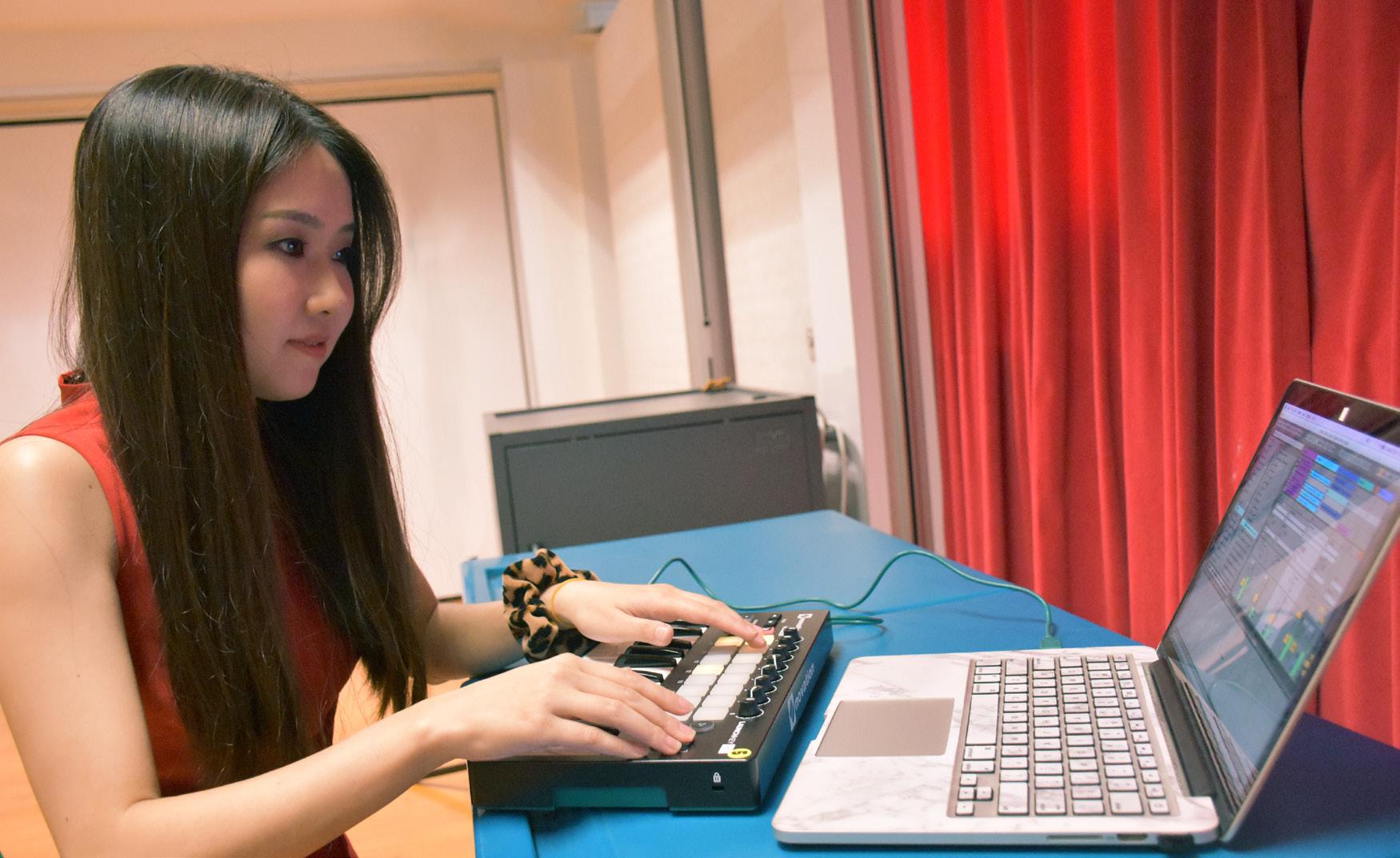
Considerations Using Technology
Most teachers are enthusiastic about the role technology can play in improving learning. However, some may feel unprepared to take advantage of these digital tools in the classroom. Some of these barriers include inadequate knowledge about the technological tools (hardware and software) and the lack of experience in using them. Thus, the focus lands on the technical aspects of learning to use technology.
Jia Ling intended to introduce a new technological tool that is popularly used in the industry. As she was unfamiliar with it, she researched on the equipment and spent time exploring the functions to familiarise herself with it. She had to figure out
Jia Ling explores and creates music using the technological tool before deciding if it’s suitable for the classroom if it was suitable for use in the classroom. It was a struggle initially as she was learning to use the tool and concurrently making connections on how the tool could complement what was already planned in the curriculum. She also had to consider her students’ prior knowledge and scaffold the lessons accordingly. It helped that she was learning from scratch as she could better break down the learning process for her students.
Be practical and think through the details and feasibility of the module. Be brave as there is no better time than
now.
Jia Ling
The fear to learn something new is a hurdle to integrating technology in music lessons. We will, however, not know what technology can bring to music education unless we start using it. Besides spending time to learn the tool, it would help if teachers work together and learn from each other. This would accelerate the learning process. Another alternative is to begin with short projects that are highly related to the work that students are currently doing.
The other consideration revolves around logistical preparation and execution for each lesson that harnesses technology. These elements include troubleshooting for malfunctioning equipment, as well as managing the use of limited equipment, especially when there are insufficient numbers for each student to have simultaneous access.
Despite the limited funds to buy equipment such as cables, microphones, microphone stands, mixers, and speakers, Jia Ling was not dissuaded from teaching her students how to create a live sound setup. She made use of alternative materials to create models of the original equipment, so that all students could concurrently participate in handson activities, thereby making the learning engaging and interactive.
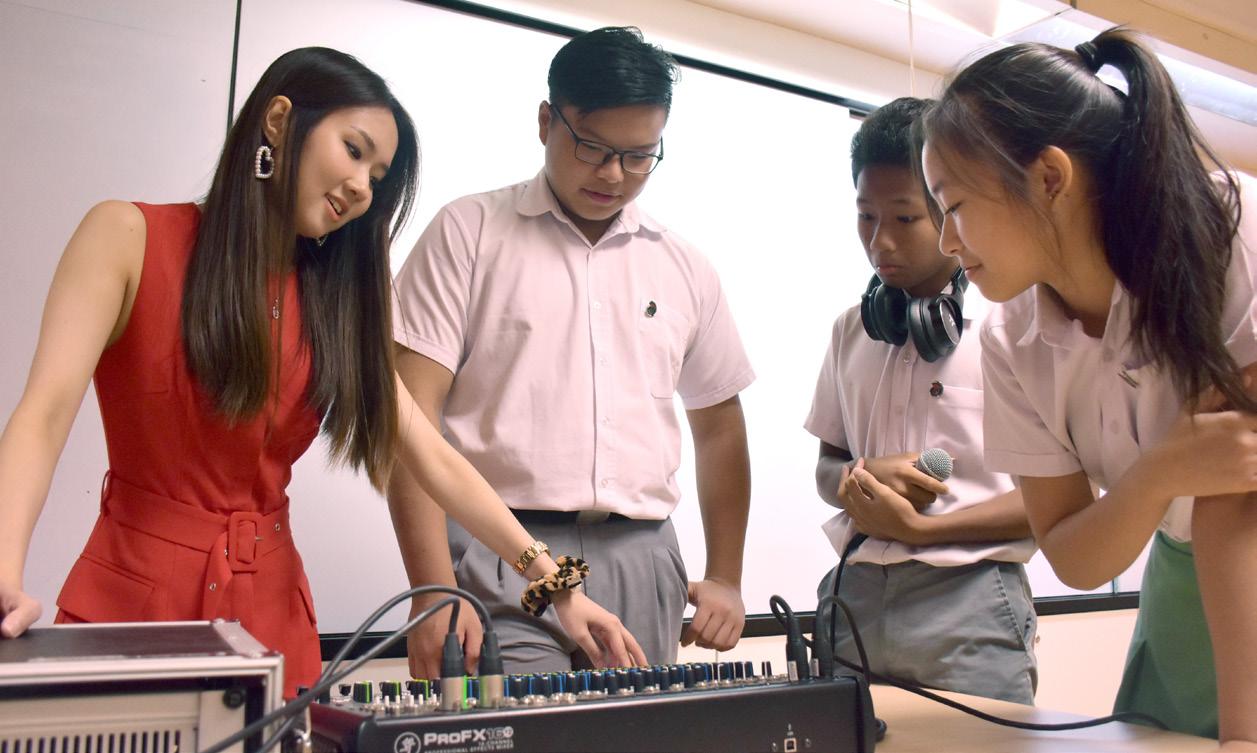
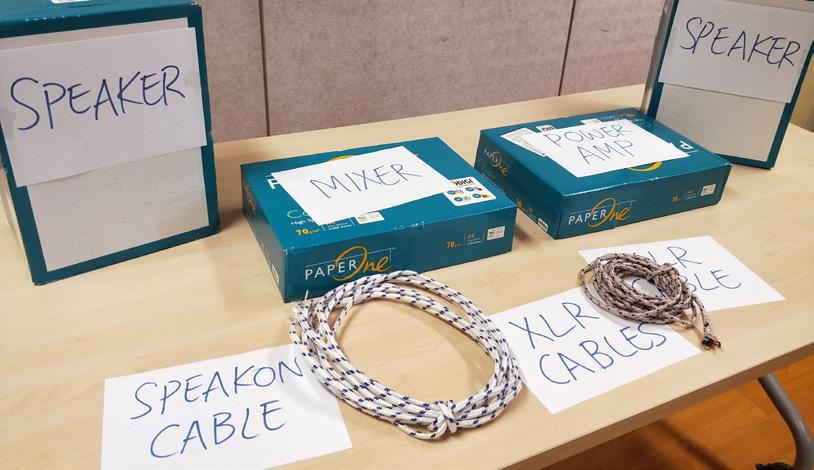
Station 1
Cable-coiling
Station 2
Set up
Microphone stands
For instance, she used skipping ropes and cardboard boxes to create additional “cables” and “speakers”, respectively. She also devised multiple stations within the classroom, where students would be split into groups to learn specific skills at each station, such as cable-coiling and setting up of microphone stands, before moving on to another station. By doing so, all students were able to acquire the relevant skills in an experiential manner, even with the lack of equipment.
Station 3
Plugging the cables to the sound system
While the use of technology in the music classroom undeniably
comes with a set of practical difficulties, teachers should try to source for creative solutions to overcome these challenges by working with other teachers who have been successful in their implementations. Through the collective wisdom of the fraternity, teachers will be encouraged to explore ways to teach music innovatively with technology.
Conclusion
As technology is constantly advancing and evolving, music educators need to be aware of how technology redefines music, music-making, and music learning experiences. There is no need to incorporate every technological innovation into the classroom. Rather, teachers need to discern factors such as the technology’s usefulness and suitability for the music classroom, how it could be harnessed to give students access to music, deepen music learning, and build 21CC in our students. In essence, teachers should continually exercise adaptability in refining their technological pedagogical and content knowledge (TPACK) to ensure that any integration of technology in music lessons remains relevant and meaningful (Bauer, 2014).
When technology is purposefully harnessed for music education, students can enjoy authentic learning experiences and even develop a propensity for music-making, beyond the classroom.
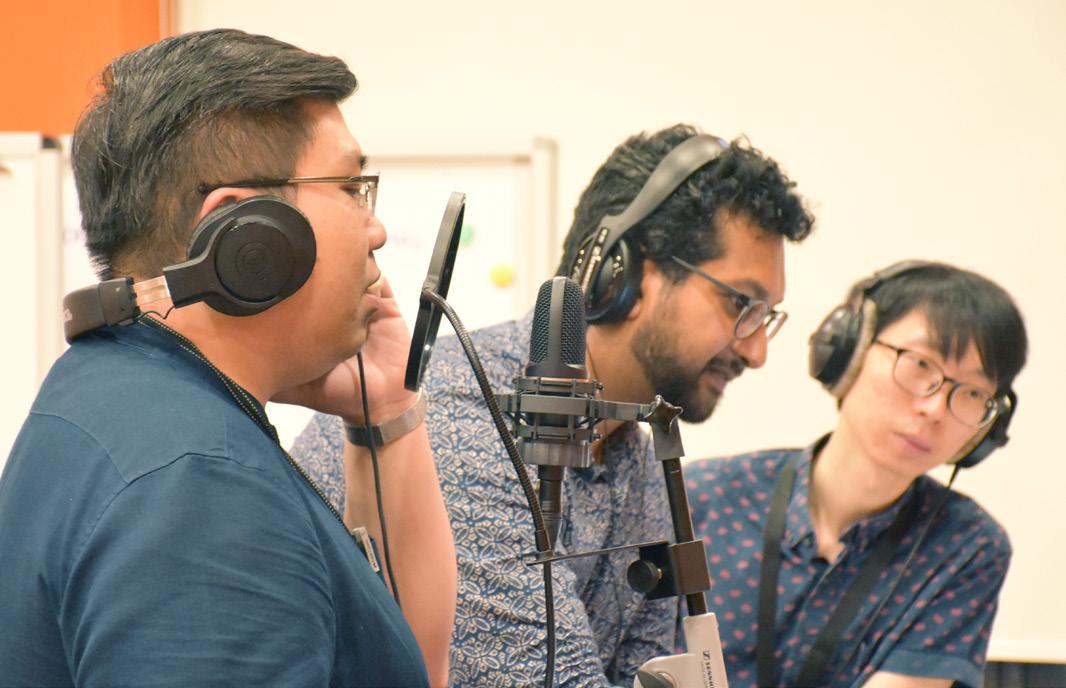

When technology is purposefully harnessed for music education, students can enjoy authentic learning experiences and even develop a propensity for musicmaking, beyond the classroom.
From top:
Participants working on a vocal recording activity during the Basic Music Production workshop
Participants exploring the use of technology to deepen students’ musical learning at the ICT Milestone Workshop
Inquiry-Based Learning: A Process of Making Music
An approach to learning, encompassing a series of lessons over time and across levels, to enable students to express, experiment, collaborate, and reflect.
When we explore new ways of thinking about music teaching and learning, and experiment how it might be enacted in the classroom, we are re-imagining how the music classroom can be
transformed to more effectively scaffold our teaching and help our students think more critically when creating, performing, and listening to music.
“Through the inquiry approach, students think through and internalise concepts… They are more likely to remember and enjoy the lesson, even though that could take up more time. The learning outcomes are better and these are backed up by research.”
Mr Ong Ye Kung Education Minister Work Plan Seminar
2018
How might Inquiry-Based Learning (IBL) look like in the music classroom? IBL in music advocates authentic music learning experiences that develop 21st Century skills such as critical thinking, problem-solving, collaboration, communication, and creativity. The approach focuses on music-making and develops the students’ musical knowledge and skills through placing students’ observations, questions, and responses at the centre of the learning experience.
IBL Being Intrinsic to the Musical Experience
Music-making is an iterative and non-linear process, as is the process of inquiry. With careful
facilitation from teachers, students begin to acquire an inquiring mindset towards music, how they direct their learning, and how they sequence their steps in the process of making music.
This process of musical inquiry grants ownership of learning to students and empowers them to decide which learning trajectories are most musically interesting and relevant to themselves. This builds student motivation to learn, leading to greater retention of knowledge, deeper understanding, and more positive attitudes towards continued learning of music. Ultimately, students gain independence to be lifelong learners of music, which is important to other aspects of life as well.
Music Inquiry Framework
The Music Inquiry Framework is undergirded by the four music pedagogical leverages (MOE, 2016). The framework features four modes of inquiry:
• Express
• Experiment
• Collaborate
• Reflect
Student
These modes can be used in any combination or sequence that most effectively and naturally supports the music teaching and learning process, based upon the instructional models of Gradual Release of Responsibility (Figure 1), Staged Self-Directed Learning (Figure 2), and the Inquiry Continuum (Figure 3) as the underpinnings.
Ministry of Education. (2016). Enhancing 21st Century Competencies in Physical Education, Art and Music: PAM Research Report. Singapore.
Stage
Modelling (Show me)
Guided Practice (Help me) Self-Discovery (Let me)
Pearson, P. D. & M. C. Gallagher (1983). The Instruction of Reading Comprehension. Contemporary Educational Psychology, 8, 317-344.
Grow, G.O. (1991). Teaching Learners to be Self-Directed. Adult Education Quarterly, 41(3), 125-149.
Figure. 3 Inquiry Continuum (Rezba, Auldridge & Rhea, 1999; Bell, Smetana and Binns, 2005)
Confirmation Structured inquiry Guided Inquiry Open Inquiry
Students confirm a fact through an approach which is prescribed by the teacher. The results are already known in advance.
Students investigate a teacher-presented question and generate explanations for the results through a prescribed approach.
Students investigate a teacher-presented question with the students designing and/or selecting the approach to test the question and generate explanations for the results.
Students investigate their own question with them designing and/or selecting the approach to test the question, generate their explanations and conclusions from the results.
Below is an example of how the Music Inquiry Framework can be applied in part or in entirety, over a series of lessons across time and levels:
Song-writing as a group to a given theme [with the option of using a Digital Audio Workstation (DAW)]
Teacher-directed
Lyrics
Teacher provides a set of lyrics as a template to which students can choose to change selected words.
Modes Express and Experiment
Music Teacher specifies the parameters (e.g. chord progression, choice of instruments, style, balance) to be included in the song. A project template for music arrangement is provided for students. The iterative process is limited.
Lyrics
Teacher elicits words from the class in response to the given theme. Students will use these words in their lyrics.
Music
Teacher involves students in deciding the parameters and offers suggestions for the students’ consideration (e.g. chord progressions, choice of instruments, style, balance). Students are given the option to modify the project template for music arrangement (e.g. type of drum).
Lyrics
Students craft the lyrics for one section of the song (e.g. Verse or Chorus)
Student-directed
Bell, R., Smetana, L., & Binns, I. (2005).
Simplifying Inquiry
Instruction: Assessing the inquiry level of classroom activities.
The Science Teacher, 72(7), 30-34.
Lyrics
Students are given the autonomy to craft the lyrics of their song.
Music
Students are given the opportunity to decide the parameters in their group’s song (e.g. chords, choice of instruments, style, balance) with input from the teacher. Students decide on their music arrangement, with input from the teacher.
Music
Students have the autonomy to decide the parameters in their group’s song (e.g. chords, choice of instruments, style, balance, mix and pan).
Students decide on their music arrangement.
Teacher-directed
Collaborate
Modes
Reflect
Students work on their song using the lyrics and music templates provided.
Students work through ideas for their song, with suggestions from the teacher.
Teacher decides on the specific assessment criteria and gives students feedback on their song. Teacher co-constructs assessment criteria with students, and gives feedback on their song.
Students’ motivation to learn music is determined by a sense of purpose, meaning and interest, and also shaped by their learning environment, and their cognitive and social contexts. It is important that teachers allow students to develop a sense of purpose in music-making through the objectives they wish to accomplish. Developing purpose in music-making is one of the first steps to opening the way for students’ voices and enhancing their motivation for learning. What they have learnt, or would be learning in time, is a continuous process of discovery that would eventually enable them to apply their musical process and transfer their musical learning to other areas. Hence, IBL, when incorporated well in music, can be
Students work through their song, with facilitation by the teacher.
Student-directed
The groups work independently.
Teacher facilitates the process of students giving feedback on the other groups’ songs, in relation to the co-constructed criteria.
Students selfreflect in groups on the musical coherence of the song, in relation to the co-constructed criteria.
a powerful approach to deepen students’ musical learning.
To conclude, IBL begins with, or is initiated and prompted by uncertainty, curiosity, and wonderment. Its goal is to understand, to develop new perspectives, and to investigate and reframe practice over time. It does not necessarily assert a final knowing (Pinnegar, 1998, as cited in Campbell, 2014) as musical learning goes on for life.
Campbell, M. R. (2014). Inquiry and Synthesis in Pre-service Mu-sic Teacher Edu-cation: A close look at cultivating self-study research. In Promising Practices In 21st Century Music Teacher Education (pp. 149-174) New York: Oxford Univesity Press.
Cards to Cue, Trigger, and Question
Facilitating musical thinking and creative expression through the use of Musicking Cards. and think deeper about the meaning and implications of their musical choices.
The Musicking Cards resource is a springboard for students to discover musical possibilities. It encourages students to explore and play through the variety of musical pathways and surprises that the cards offer, while building in students the musical vocabulary to describe and give voice to their ideas.
The words and questions on the cards serve as suggested triggers to stimulate creative work and discussion. The questions generate new ideas and give students opportunities to reflect

Ameerah using selected Set 1 and 2 Musicking Cards to facilitate her students’ compositional process
At Riverside Primary School, Lead Teacher (Music), Ameerah Sharainee Zain uses the Musicking Cards to develop her students’ understanding of musical concepts and empower them to be more conscious and intentional about applying musical concepts to achieve their desired musical effects.
In her upper primary classes, the students work in groups to create short compositions and perform these using different instruments, such as keyboards, guitars, ukuleles, pitched and unpitched percussion instruments. To facilitate her students’ compositional process, she uses the Set 1 and Set 2 cards to encourage them to consider musical concepts such as dynamics, register, and form, and to stretch their imagination to discover and apply new compositional possibilities.

Cue Cards – Set 1
Ameerah issued two Set 1 cards: ‘ Diminuendo ’ and ‘ Silence ’ to her students. Students had to consider ‘ when ’ and ‘ how ’ to demonstrate these music concepts. They experimented using different instruments and explored various ways of incorporating ‘ Diminuendo ’ and ‘ Silence ’ to develop their compositions.

WATCH
Click here to view an example of how Set 1 Musicking Cards could be used
Trigger Cards – Set 2
To further enhance the students’ compositions, Ameerah gave her students specific Set 2 cards to stimulate their thinking about targeted musical concepts. Based on the students’ work in progress, prior knowledge, abilities, and potential, Ameerah purposefully selected cards that would encourage the students to explore and work on broader compositional aspects. For instance, if a group’s composition lacked contrast in terms of tempo and pitch, Ameerah would select the ‘ Contrast’ card and indicate using stickers that the group could include either ‘ fast/slow’, or ‘ high/ low’ elements in their composition.
After performing their compositions, Ameerah’s students reflected on ‘why’ they made certain musical decisions and articulated their intentions to their peers, while making references to the relevant musical concepts, ensuring that their thinking processes were made visible.
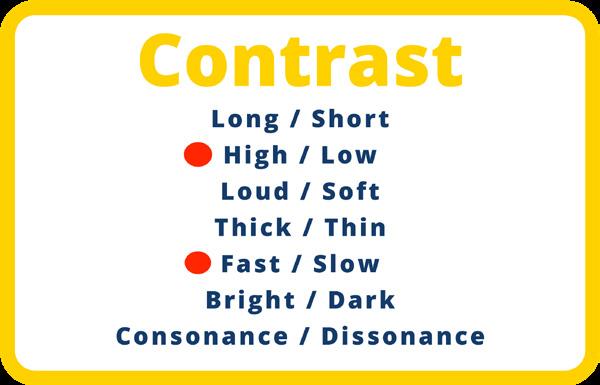


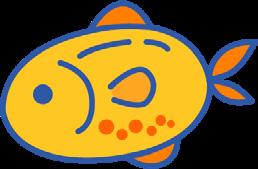



WATCH
Click here to view an example of how Set 1 and Set 2 Musicking Cards could be used in combination
Question Cards – Set 3
To complement the Set 2 ‘ Contrast ’ card, there are seven related Set 3 cards that provide open-ended questions for students to probe deeper and rethink their compositions.
Based on the example where Ameerah intentionally selected the ‘fast/slow ’, or ‘ high/low ’ elements for students to incorporate in their compositions, a teacher could also extend the students’ learning by providing the following Set 3 cards:
ZZ Z


Collaboratively, students can discuss and reflect critically on their compositions. These openended questions in the Set 3 cards would enable students to explore, explain, review, and evaluate their musical decisions more comprehensively.
When using the Musicking Cards, students also begin to experience and understand the iterative process of music-making as they explore, discuss, review, and make refinements to their work in progress. By using the cards to cue, trigger, and question, students at Riverside Primary School have become more competent in describing their music compositions using the
appropriate musical vocabulary and in providing constructive feedback for their peers to improve their work.
To prepare students to use the Musicking Cards effectively in composition and performance, teachers need to ensure that students develop certain foundational skills and receive progressive exposure to musical
WATCH
Click here to view an example of how Set 1 and Set 3 Musicking Cards could be used in combination
concepts from Primary One, both in terms of breadth and depth. In Riverside Primary School, students learn to play a variety of instruments and have numerous opportunities to improvise, compose, and perform in group settings. Students also acquire a basic understanding of key musical concepts and learn how to apply them in their performances too.
At Stage 1 (Primary One to Two), Ameerah introduces musical concepts to her students through singing activities. After a teacherled singing activity where students experience these concepts, she reinforces their understanding through explanations and demonstrations, before getting her students to apply their understanding through group performances. If a group is given the Set 1 cards: ‘ piano ’ and ‘ forte ’, the students would determine the phrases to be sung loudly or softly, thus demonstrating their understanding of these terms through their singing. To consolidate their learning, she also assigns different Set 1 cards to each group, which would prepare a performance by applying their designated musical concepts. After each performance, the audience would have to guess the cards that the performers have used and critique the performers’
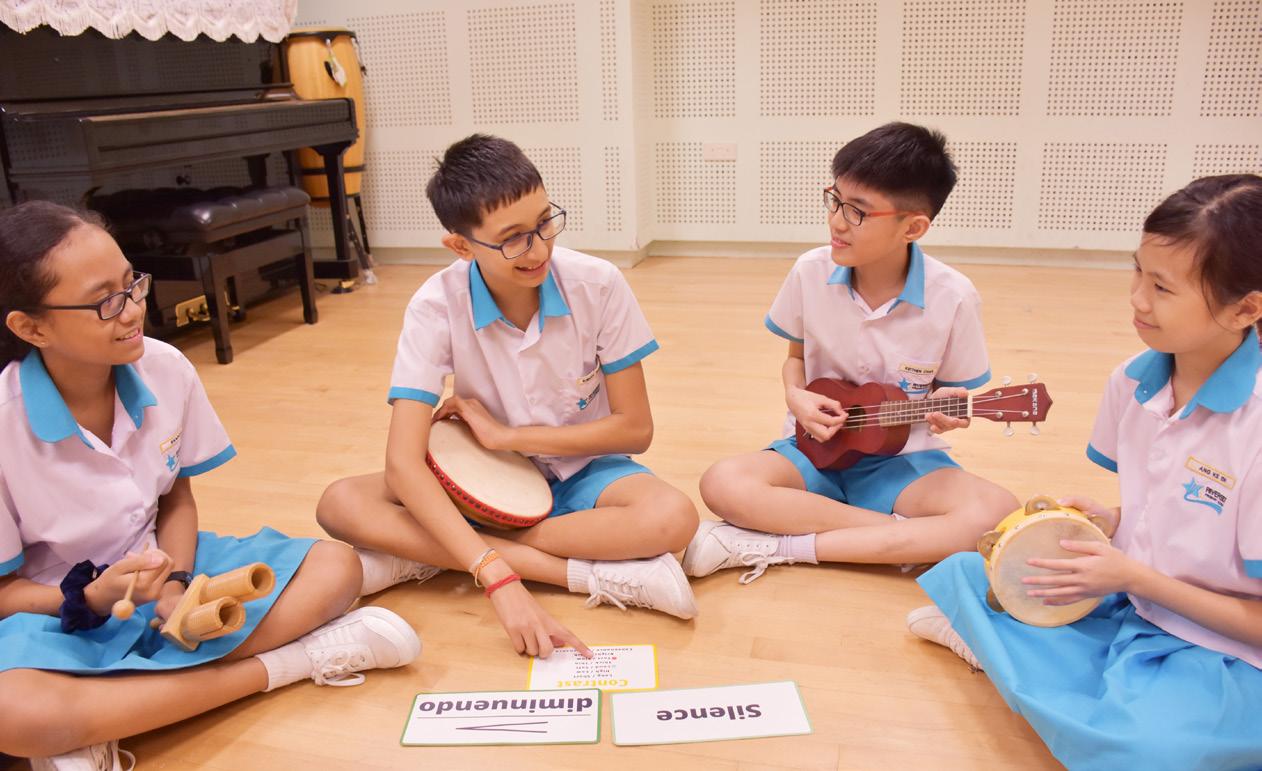
attempts to demonstrate their understanding of the relevant concepts.
Musicking cards can be used at various stages in numerous ways to meaningfully engage students as a pre-activity to musicmaking, as a reflective tool in the process of refining their music compositions, or at the end of the creative process to evaluate their compositions.
Beyond serving as a tool to teach musical concepts, the Musicking Cards can also bring about new ways of thinking, exploring, and expressing musical ideas. When using these cards, students are encouraged to go beyond their comfort zone to extend and develop their compositions and performances. Over time, students will begin to internalise the concepts and questions and naturally apply them in the course of their music-making.
Students at Riverside Primary School learn to play various instruments and frequently work together in group settings
Musical Conversation
STAR Champion Leong Su Juen shares her journey as a teacher-leader and explains how she harnesses technology to teach music.

Having been a STAR Champion for about six years, could you share with us your journey as a teacher-leader?
‘Enriching’ and ‘humbling’ are two words that come to my mind as I think about my journey as a STAR Champion. During these six years, I have gained knowledge of multiple pedagogical approaches, as well as opportunities to apply these strategies by designing lessons with other teacher-leaders and then trying them out in the classroom.
I vividly recall my first time conducting a zonal music workshop for East Zone secondary school music teachers, as well as an open classroom demonstration in front of other STAR Champions. While it was a nerve-wracking experience for me to share in front of my fellow music teachers and teacher-leaders, I appreciated the opportunity to receive feedback from my colleagues, who in turn helped to deepen my understanding of pedagogies.
Over the years, I realised that a STAR Champion is not just a teacher-leader who trials new teaching approaches in the music classroom, but is also someone who advocates quality teaching and learning experiences.
I am grateful for the numerous opportunities to have a dialogue, share with, and learn from other teachers in my journey as a STAR Champion.

This year, the Primary and Secondary STAR Champions had the opportunity to work together to plan and design a spiral curriculum that cuts across from Primary 1 to Secondary 2. How was the experience?
It was an eye-opening experience, which debunked many of my previous assumptions of music lessons in primary schools. I was especially grateful to have had the opportunity to work in a team with senior teachers from primary schools. Through our interactions and discussions, I gained several insights on how primary school teachers design their curriculum and developed a better understanding of students’ learning experiences in primary schools. Such information is extremely
useful, because it informs how secondary school teachers could plan and pitch their lessons.
Through this experience of designing a spiral curriculum, I realised it was possible to design curricula based on an eightyear period that spans from the primary to lower secondary schooling years. By incorporating varying degrees of complexity for the appropriate age levels, the students’ musical learning would be seamless and developmental.
You conducted a teacher-led workshop on song-writing this year. What were some of your takeaways?
At the Teacher-Led Workshop (TLW) on song-writing, I tried to apply what I learnt from the East Zone (EZ) Song-writing Networked Learning Community (NLC), which I co-facilitated with Dr Kelly Tang (MTT, Music). This EZ Song-writing NLC encouraged me to make my thinking visible in order to communicate and facilitate more effectively.
It was an interesting experience for me because it was my first time helming a full three-hour TLW on my own. My biggest takeaway was in relation to andragogy because the strategies used to engage adult learners are quite different from that of younger learners.
Through this entire process, I also realised the importance of planning well and seeking advice from a mentor to consider different perspectives, address my doubts, and overcome my shortcomings, in order to conduct a meaningful workshop for my colleagues. I am thankful for the guidance I received from Mrs Li Yen See (MTT, Music), which enabled me to conduct a

workshop that was, thankfully, well received by the participants.
Sometimes, I tend to feel insecure about my abilities, especially when I am exploring teaching areas that I am less familiar with. Contrary to common perceptions that teacherled workshops are platforms for competent teachers to showcase enriching lessons, these workshops also allow the workshop facilitators to learn from the participants. I feel that a workshop facilitator is not only a ‘sage on stage’, but also a ‘guide on the side’ and someone who learns from the participants. In fact, I was grateful for the opportunity to bounce ideas off a room full of enthusiastic teachers who were passionate about songwriting. From the preparation stage to the execution of the workshop, there was much for me to learn, unlearn, and relearn.
Guiding her students in their songwriting task
We understand that you attended the Basic Music Production Workshop this year. How has the experience shaped your perspectives on harnessing technology to teach music?
Prior to attending the workshop, I used to think that technology essentially widened the preexisting collection of tools to make music. However, I’ve realised that technology encompasses far more than just serving as another operational tool to make music. With proper scaffolding and planning, technology-based learning platforms allow teachers to facilitate the teaching of musical concepts and even provide more opportunities for students to engage in self-directed learning by allowing students to respond to differentiated instructions and set their own pace of learning.
How have you been using technology to enhance your students’ musical learning?
In my school, we make use of technology to achieve the following learning outcomes:
Developing keener aural skills
During lessons with my Secondary 3 Normal Technical students, I usually get them to figure out

the melodic notes and chords to a particular song by using the virtual instruments from the GarageBand app. These virtual instruments enable students to replicate the instrumental parts from the song with greater ease because they do not have to grapple with the technical complexities of playing an actual instrument. Instead, students are able to focus on refining their aural skills and become more confident once they realise that they can play a song without necessarily requiring high levels of theoretical knowledge or instrumental skills. Eventually, their experiences in using virtual instruments can help to ease them into the process of learning to play the actual instrumental skills. Furthermore, this heightened aural awareness enables the students to recognise musical details such as accompaniment patterns and, thus,
apply these aural skills by making informed musical decisions in their music arrangement projects.
Developing instrumental skills
We prepare customised video tutorials for lower secondary students to learn how to play the ukulele, keyboard, and cajon. The students are able to use these videos quite intuitively. These videos enable students of different abilities to learn at their own pace because they can decide whether to pause, skip, or re-watch certain portions of the videos.
Creating authentic learning experiences through our recording studio
We realised that many of our students were curious about the equipment found in the school’s recording studio. Previously, students would remark that the studio was “so cool” and request to touch the equipment. We decided to introduce the recording process to them by allowing students to record their performances in the studio. In future, we intend to teach interested students how to operate the equipment. Through projects such as the production of music tracks for school events, our students will be able to apply their musical learning in authentic settings, from arranging and composing, to recording and post-production.
While many of us may assume that students will naturally enjoy using technology during their lessons, we should be selective and purposeful in considering the objectives of using technology. For instance, our students are definitely conscious of the fact that making music with virtual instruments is not the same as playing an actual instrument. If a teacher’s use of technology in the music classroom revolves entirely around getting the students to tap on their iPads, the students may lose interest over time and express a preference for learning an actual instrument, even if it is a more difficult endeavour. The onus is on us teachers to ensure that we use technology in a meaningful manner to bring about deeper musical learning for our students.

Thank you for sharing your work as a teacher-leader, as well as your perspectives on harnessing technology to teach music. As a teacher-leader, what are some of your hopes for the fraternity?
I hope we will continue to be a supportive fraternity, where all of us will look out for one another and have open conversations about what we are doing in our respective schools. By doing so, we could share our best practices to benefit more students.
This support could also extend beyond providing professional advice to taking care of each other’s emotional well-being. More often than not, music teachers do face similar challenges in schools, and there may only be one or two of us in each school. Thus, if we build a community across schools, all of us can tap on a larger
network of educators for advice and inspiration.
I’d also like to encourage all Beginning Teachers to connect with other colleagues in the fraternity and to be brave enough to try out any innovative ideas that they may have in the classroom. Instead of harbouring a fear of judgement and failure, I hope that all of us will be forthcoming in providing constructive criticism for each other to improve and remain receptive to feedback. In doing this, we can all grow together to provide engaging music lessons for our students.
STAR Highlights
Another semester of new musical experiences with STAR. We’ve put together a roundup of highlights that have taken place.
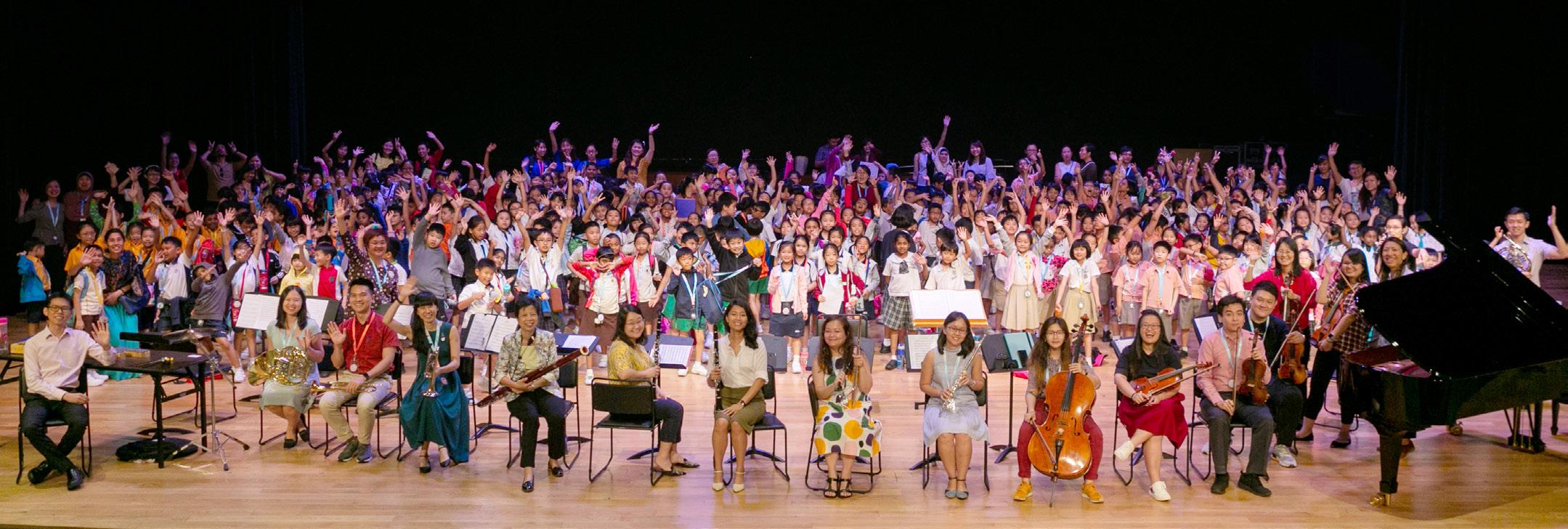

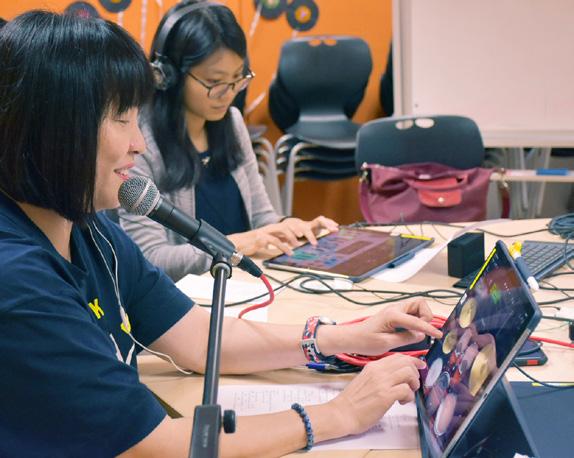



01 12 EWS Teacher-leaders, 360 students from 12 Primary Schools and 20 teacher-musicians coming together to experience singing as part of a larger community at the EWS Day 2019 02 Participants from our Basic Music Production Workshop recording their version of a song from STAR’s Stories We Sing Resource 03 Performing as an ensemble at our Orff Approach for Student-
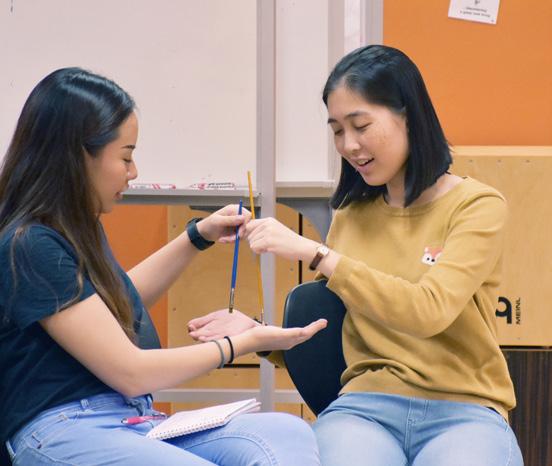
Centric Music Lessons Workshop
04 Listening and responding to one another at our Orff Plus Workshop
05 Participants arranging and recording their own tracks at our ICT Music Milestone Programme 06 75 teachers performed at our annual Friends In Concert 07 MK teachers painting strokes on each other's hands to experience the beat of the music at our EWS (Early Childhood) Workshop
We’d Love To Hear From You
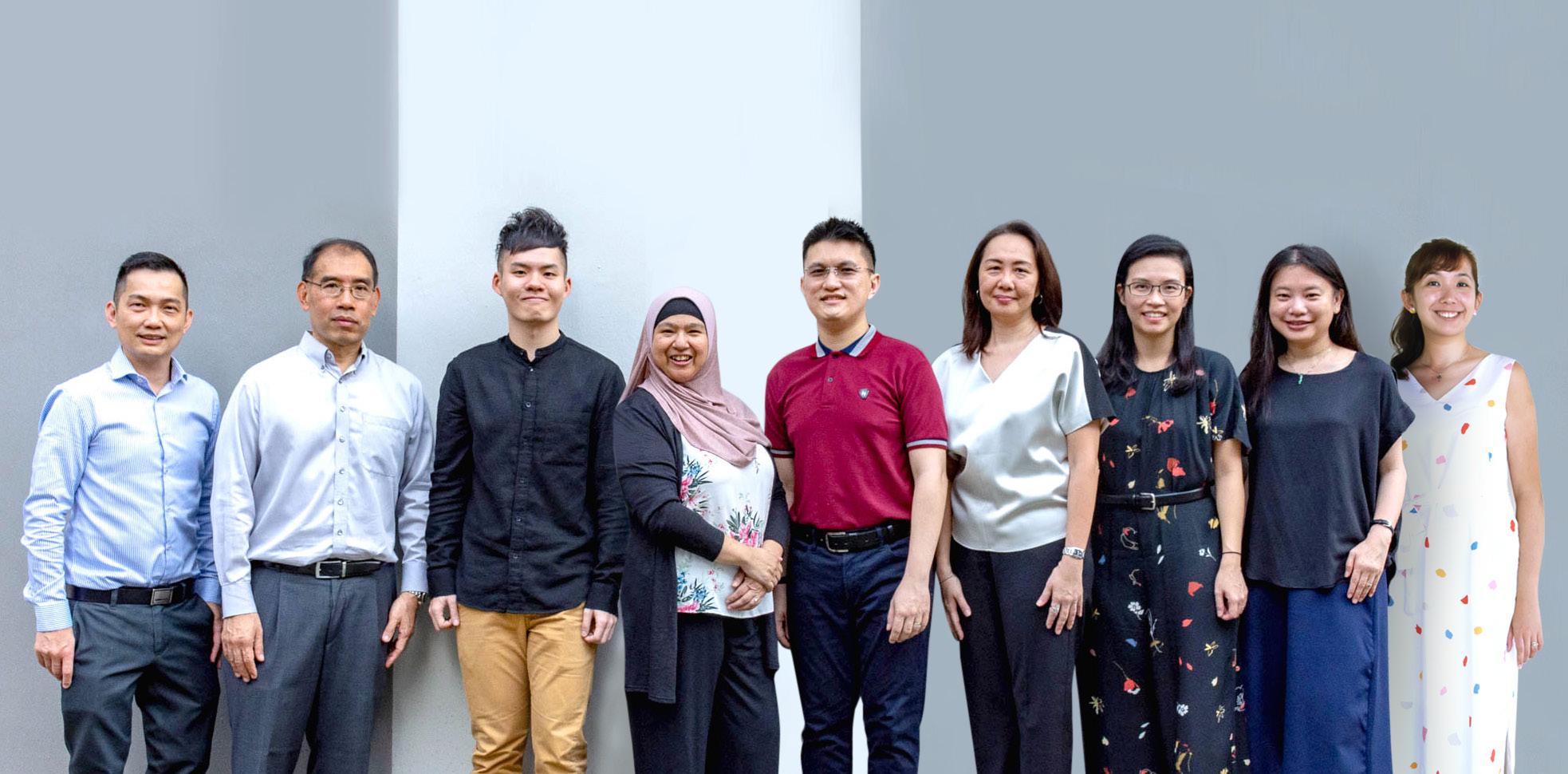
Lee Huan Siak James
Deputy Director (Music)
Lee_Huan_Siak@moe.gov.sg
+65 6664 1493
Li Yen See
Master Teacher (Music)
Chan_Yen_See@moe.gov.sg
+65 6664 1499
Suriati Bte Suradi
Master Teacher (Music)
Suriati_Suradi@moe.gov.sg
+65 6664 1498
Tan-Chua
Siew Ling
Master Teacher (Music)
Chua_Siew_Ling@moe.gov.sg
+65 6664 1501
Kelly Tang
Master Teacher (Music)
Kelly_Tang@moe.gov.sg
+65 6664 1561
Chan Yu Ling Josephine
Senior Academy Officer (Music)
Josephine_Chan@moe.gov.sg
+65 6664 1555
Eng Yan Chen Alvyn
Academy Officer (Music)
Alvyn_Eng@moe.gov.sg
+65 6664 1497
Wong Yong Ping Tommy
Academy Officer (Music)
Tommy_Wong@moe.gov.sg
+65 6664 1495
Liow Xiao Chun
Academy Officer (Music)
Liow_Xiao_Chun@moe.gov.sg
+65 6664 1494
